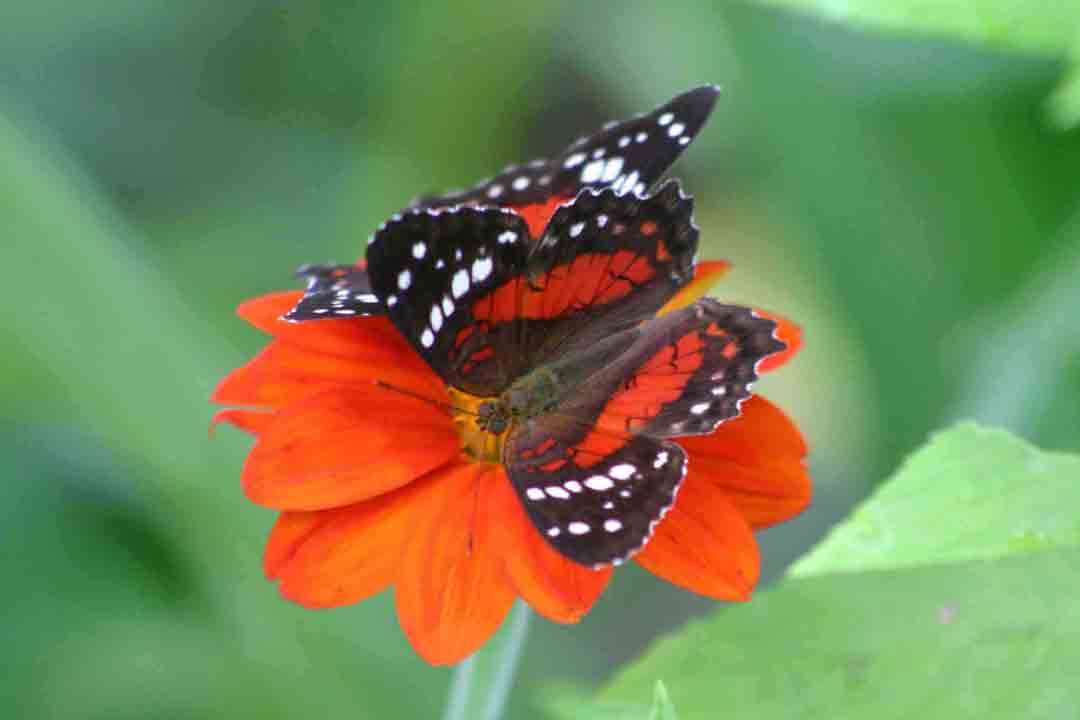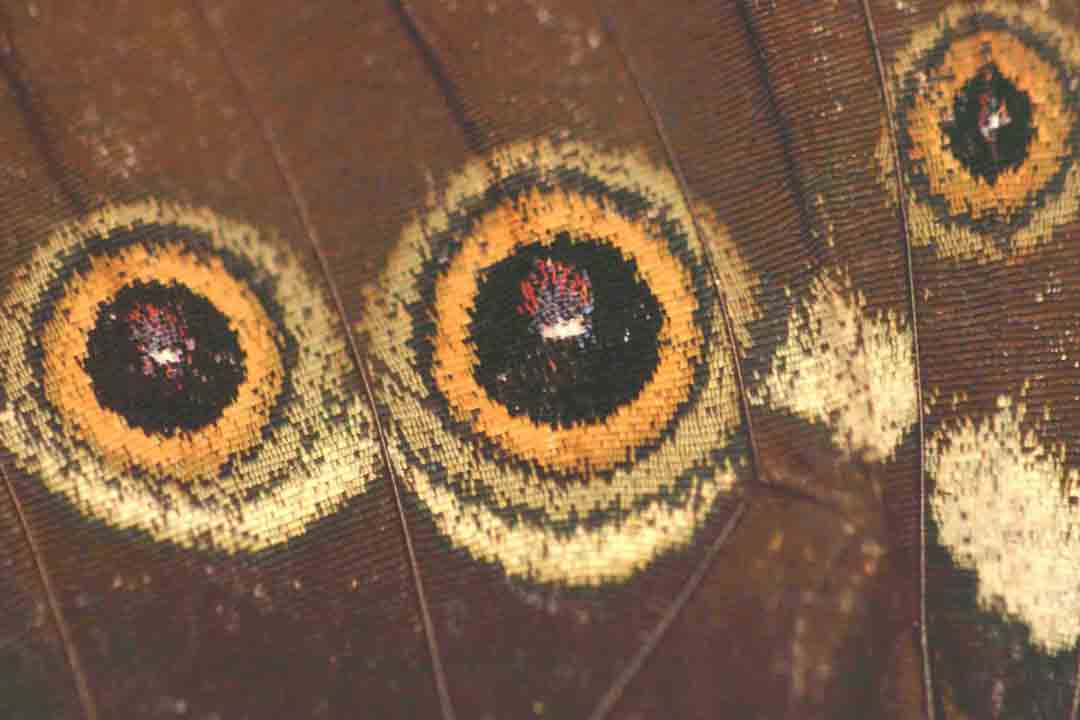Education
Research
Collaborators
Research Links
Other Links
Publications



Department of Biology
University College London
London NW1 2HE
Fax:
Email:
+44 0202 6795052
Redirecting to latest newsletter. If you're not redirected within a couple of seconds,
click here:
Dasmahapatra Group, University of York
EducationResearchCollaboratorsResearch LinksOther LinksPublications
|
 |
 |
 |
|
| 4 Stephenson Way Department of Biology University College London London NW1 2HE |
||||
| Tel Fax: Email: |
+44 0207 6795100 +44 0202 6795052 |
|||
I am interested in the application of molecular markers to understanding evolutionary processes and species biology. My current work focuses on Ithomiine and Heliconiine butterflies. These highly diverse butterflies occur throughout the Neotropics and possess mimetic warning colour patterns. This research is concentrates on several areas:
Pleistocene refugia hypothesis - The Amazon is reknown for its high species diversity. Several hypotheses have been put forward to explain this diversity, one of the most widely accepted of which is allopatric speciation in forest refugia formed during arid spells in the Pleistocene. A consequence of such a mode of species formation would be highly correlated species divergence times. I am using gene genealogies to investigate divergence times between multiple pairs of sister taxa within a small area of Peru with a well defined "suture" zone (a well defined area where many pairs of taxa meet).
Melinaea phylogeny - There is an ongoing international effort to obtain complete phylogenies of the various Ithomiine genera using mitochondrial and multiple nuclear genes. One of the goals of these complete phylogenies is to understand the evolution of mimicry colour patterns. I am involved in constructing a phylogeny of the genus Melinaea. Members of this genera are thought to drive the black/brown/orange mimicry rings. Intriguingly, initial results appear to indicate that species in this genera have shown very rapid recent speciation, indicating that many of the colour pattern mimicry rings may be of recent origin and could have arisen long after speciation.
DNA barcoding - Due to the impressive mimicry rings formed by the Heliconiine and Ithomiine, these have long attracted the attention of collectors and taxonomists. Therefore, these butterflies are morphologically well characterised. Coupled with the high species and subspecies richness this makes them ideal taxa for testing DNA sequence-based methods of species identification, popularly known as DNA barcoding. I am investigating the efficacy of mtDNA-based species identification and the benefits of adding nuclear genes to such methods.
Wolbachia - I am also involved with investigating the prevalence of infection by Wolbachia and other maternally transmitted sex ratio distorting endosymbionts in Ithomiine butterflies and in establishing the evolutionary consequences of such infections.
Dasmahapatra KK, Mallet J (in prep) DNA barcoding and species-subspecies continuum.
Dasmahapatra KK, Hoffman JI, Amos W (in prep) A pinniped phylogeny based on nuclear markers.
Dasmahapatra KK, Lacy RC, Amos W (2007) Estimating levels
of inbreeding using AFLP markers. Heredity xxx: 000. ![]()
Hoffman JI, Dasmahapatra KK, Nichols HJ (2007) Ten novel polymorphic
dinucleotide microsatellite loci cloned from the Antarctic fur seal Arctocephalus
gazella. Molecular Ecology Notes xxx: 000. ![]()
Elias M, Hill RI, Willmott KR, Dasmahapatra KK, Brower AVZ,
Mallet J, Jiggins CD (2007) Limited performance of DNA barcoding in a diverse
community of tropical butterflies. Proceedings of the Royal Society B 274: 2881-2889.
![]() supplementary material
supplementary material
Dasmahapatra KK, Chung J, Silva-Vasquez A, Mallet J (2007)
Genetic analysis of a wild-caught hybrid between non-sister Heliconius butterfly
species. Biology Letters 3: 360-363. ![]() supplementary material
supplementary material
Dasmahapatra KK, Mallet J (2006) DNA barcodes: recent successes
and future prospects. Heredity 97: 254- 255. ![]()
Dasmahapatra KK, Lessells CM, Mateman AC, Amos W (2004) Microsatellite loci in the European bee-eater, Merops apiaster. Molecular Ecology Notes 4: 500-502. ![]()
Madden JR, Lowe TJ, Fuller HV, Coe R, Dasmahapatra KK, Amos W, Dury F (2004) Neighbouring male spotted bowerbirds are not related, but do maraud each other. Animal Behaviour 68: 751-758. ![]()
Madden JR, Lowe TJ, Fuller HV, Coe R, Dasmahapatra KK, Amos W, Dury F (2004) Local traditions of bower decoration by spotted bowerbirds in a single population. Animal Behaviour 68: 759-765. ![]()
Blum MJ, Bermingham EP, Dasmahapatra K (2003) A molecular phylogeny of the neotropical butterfly genus Anartia (Lepidoptera: Nymphalidae). Molecular Phylogenetics and Evolution 26: 46-55. ![]()
Dasmahapatra KK, Blum MJ, Aiello A, Hackwell S, Davies N, Bermingham EP, Mallet J (2002) Inferences from a rapidly moving hybrid zone. Evolution 56: 741-753. ![]()
Corbet SA, Bee J, Dasmahapatra K, Gale S, Gorringe E, La Ferla B, Moorhouse T, Trevail A, Van Bergen Y, Vorontsova M (2001) Native or exotic? Double or single? Evaluating plants for pollinator-friendly gardens. Annals of Botany 87: 219-232. ![]()